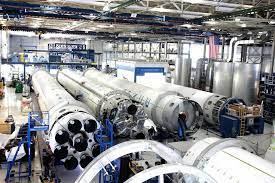Originally appears on MESA International’s ‘Where Manufacturing Meets IT’ blog
By Conrad Leiva, MESA Smart Manufacturing Working Group Chair and VP Ecosystem and Workforce Development, CESMII
Smart Manufacturing (SM) strategies have been evolving for the last decade among large corporations and many small and medium manufacturers (SMMs) might not realize that these strategies are not only applicable to them but are within reach when implemented in practical steps. Smart Manufacturing initiatives leverage technology to provide near real-time intelligent insights to optimize the orchestration of processes and become more responsive throughout the enterprise.
MESA has published a new guidebook, titled “A Low-Risk, Incremental Approach to Smart Manufacturing for Small & Medium Manufacturers“, that shows how SMMs have been implementing Smart Manufacturing initiatives and realizing not only the benefits of increased transparency and productivity, but also the transformative benefits of higher levels of coordination and speed within the enterprise and supply chain. The guidebook covers five reasons that SMMs should consider Smart Manufacturing techniques:
(a) Achieving competitive advantage
(b) Informed decision-making
(c) Maintaining a single version of truth
(d) Mitigation of risks due to scarcity of skilled labor
(e) Improvement in profit margins
Considering that SMMs may have limited resources, this document suggests taking an incremental and modular approach to Smart Manufacturing. Examples of modular initiatives are provided in this guidebook including paper-based data collection, machine health monitoring, material tracking, quality inspection, supply chain and customer interactions. SMMs can think big by developing a Smart Manufacturing roadmap but start small with projects properly budgeted and scoped to achieve benefits at each step while also making progress towards the desired future state.
The ability to implement SM systems and connect them directly to the supply chain and the end-product manufacturer is becoming a competitive differentiator among Tier 2 and Tier 3 suppliers. A few examples of how manufacturers are demanding that their suppliers exchange data directly with them are included in the guide.
SMMs might prove to be the real winners in the race to realizing the Smart Manufacturing vision because large corporations might have more difficulty transforming legacy processes and scaling their initial SM implementations into the entire enterprise. SMMs can benefit from being “fast followers,” adopting technology that has been proven by the early adopters, and the increasing number of IIoT sensors, connectors, APIs, and cloud platforms available to thread SM solutions together at a lower investment level. The democratization of these technologies and techniques makes it more practical for SMM adoption.
The biggest constraint for SMMs could be a lack of experts to help them implement these SM strategies. That is why MESA is putting this guide together and helping expand the network of consultants knowledgeable on SM solutions. Implementing SM can also be a way to attract new talent into SMMs by demonstrating how these companies can be among the best places to work with the latest technologies and solutions. SM solutions can help train the new workforce, provide guidance and assistance to increase productivity and flexibility to work on different product lines and tasks. Increasing the flexibility of the workforce is another great benefit for SMMs.

